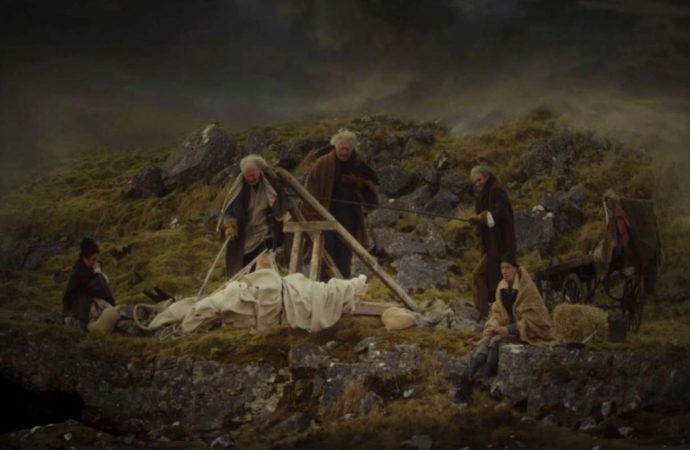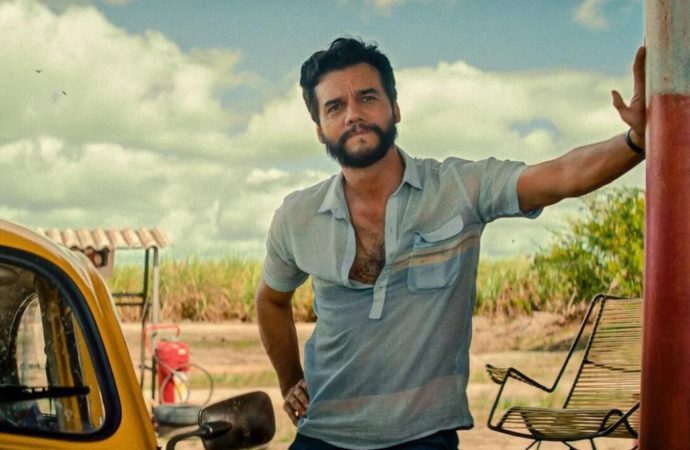Albert Serra has presented in the official section of the 72nd San Sebastian Festival, Tardes de soledad, a documentary film about bullfighting as never seen before. The sensation of closeness and intimacy experienced in front of the film borders on the quality of an immersive experience. It brings to life what, for most, could only be imagined. From the aesthetic point of view, each spectator has the possibility to make a free and personal crusade towards his or her own ethics. And this film has the specular and introspective power to put the spectator before himself in order to reveal who he is before what he observes.
The film closely follows the bullfighter Andrés Roca Rey and his cuadrilla in the moments before and after the bullfight and, above all, during the bullfight in the ruedo. Were it not for the location inside a van and a mobile phone that appears for a few seconds, the filmic reverie could almost be set at any time in the last two centuries. The bulls —five in total passed through the estocada— are also protagonists, filling the big screen with an immense portrait.

Albert Serra premiered Tardes de soledad in the 72nd San Sebastian Festival. Photo: Milena Fontana.
As the director and producers explained during the festival’s press conference, the documentary features footage shot over three years and fourteen bullfights. Three or four cameras were placed at different points in the bullring to capture shots, which tended to be closed, while the bullfighter and his assistants carried wireless microphones whose batteries had several hours of autonomy. Without these technological advances, they say, this film could not exist as it is. The audience is completely bypassed, there is no voice-over or any kind of contextualisation, the sound effects are so subtle that they can pass unnoticed by the conscience. The material is direct and raw. It is an artistic exercise that seems to flow by instinct and results in a penetrating and transcendental creation.
When asked about the controversy and protest that the presence of Tardes de soledad at the festival has provoked, Albert Serra does not enter the fray. The idea of positioning is alien to him. He does declare that he has approached the subject from a certain personal and aesthetic fascination, but he dissociates himself from the sociological derivations that this implies. It is not his task. Whether the film ‘romanticises’ animal abuse, glorifies bullfighting or demystifies it, depends on the viewer. Like the rapier, this generous and courageous work is a double-edged sword.
The academic González Requena states, speaking about the nobility of the art of bullfighting: ‘Certainly, all art, when it is true, possesses, indisputably, the quality of authenticity (…) and [authentic works of art] are surrounded by many others that feign an authenticity that they lack, and do so with a histrionic gesture that ends up being the most evident manifestation of their imposture’. It is interesting to keep this statement in mind when watching the film. The theoretical literature on bullfighting seems to be infused with high-flown and sublime properties, with an ineffable elevation and depth that are undeniable because they are enigmatic and incomprehensible. On a more mundane level, we find that in the bullring, and not only, the most pronounced praise is the traditional ole tus huevos (ole your balls, meaning well done).
This redundant exaltation of the male organs where the genesis of testosterone takes place reaches a most exuberant prominence. The best way to make a praise cease to be relevant and become jocular is to reiterate it indiscriminately. On the other hand, one of the most remarkable revelations to come out of the film, and one that falls at the feet of the film like a soul in a doldrums, is that the presumed sacredness of the bullfighting act and the nobility of the fight with the bovine are punctuated by verbal contempt for the animal.
Albert Serra contemplates in Tardes de soledad that there is something poetic in the death of the bull, in that process in which life abandons it after the fight. There is poetry in these shocking images, of course there is. But the poetry that reverberates inside each one of us is another matter. The close-ups of the bull during his passage towards death provide a clinical diagnosis of agony. His majestic body dejected, defeated. The gushes of blood glistening like patent leather. The waterlogged, unhinged snout. The languid tongue like a rag doll. The useless struggle of its nostrils to keep sucking the life out of the air. The eyes in the key of terror, with that patina of pure incomprehension. At the gates of the final collapse, what are you seeing inside? Humiliated by the pride of men, by that ridiculous need to dominate, to win a rigged fight. They use your torment to boast. They drag you down before you have had a chance to die in peace. And at the height of infamy, they deny you what you have suffered.







No one has posted any comments yet. Be the first person!